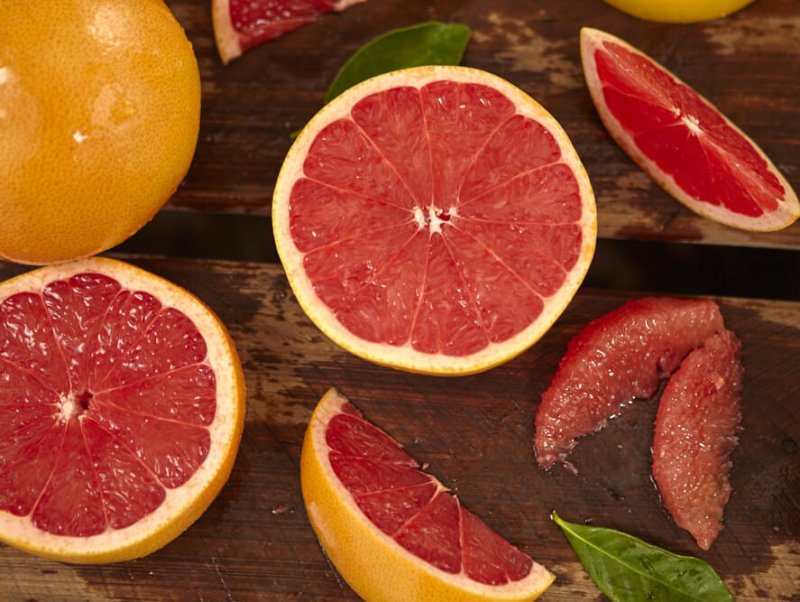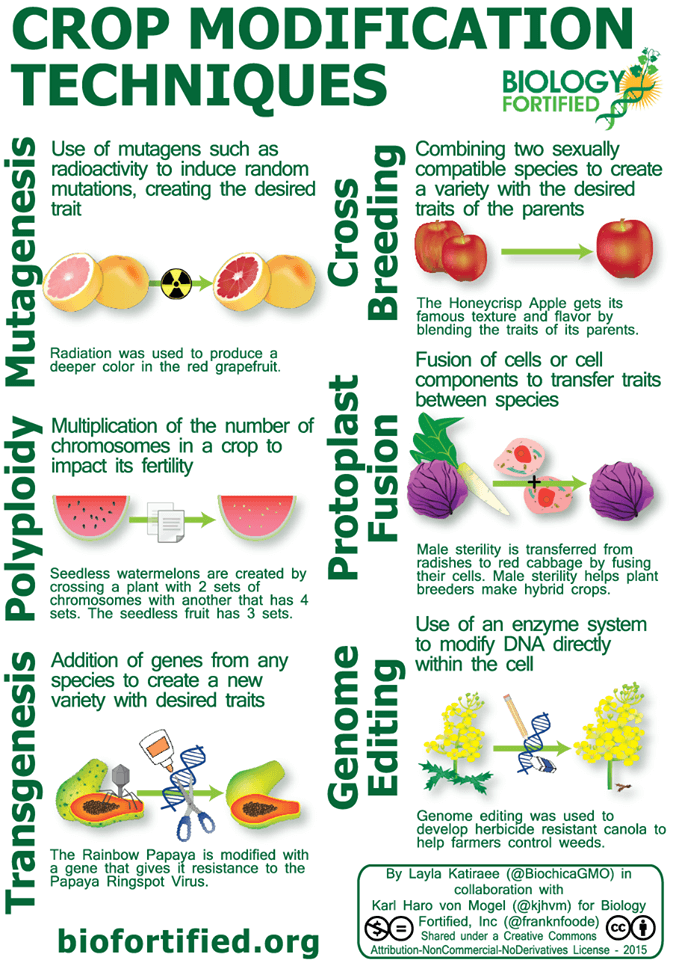[Editor’s note: Layla Katiraee is a scientist at Integrated DNA Technologies. She has a PhD in molecular genetics with a focus in epigenetics from the University of Toronto.]
There are many different ways that crops are modified. Some of these methods have been used for centuries, others are more recent. The graphic below, which was coauthored together with Karl Haro von Mogel at Biology Fortified, highlights several of these methods. Each technique is further explained here.
The focus of the “GMO debate” has been largely centered on crops developed by transgenesis.
Different crop modification techniques can have the same end result. For example, the Opal Apple is non-browning and the enzyme which causes browning was decreased using traditional cross-breeding. The Arctic Apple is also non-browning and the browning enzyme was silenced using transgenesis. Recently, a non-browning mushroom was developed where the same browning enzyme was silenced by editing the gene using CRISPR-Cas9. Yet each of these is regulated and labeled differently.
Transgenesis has generated safe products for decades. Yet groups such as GMO Free USA and Moms Across America single out the method and consider it to be harmful despite the absence of evidence to support their claims.
The GLP aggregated and excerpted this article to reflect the diversity of news, opinion and analysis. Read full, original post: The Many Ways We Modify Our Food
































